- What Are Grains?
- Whole Grains vs. Refined Grains
- How Grains Became Part of the Human Diet
- Why Are We Eating So Many Grains?
- How Grains Defend Themselves: Antinutrients
- Nutrients in Whole Grains
- Top 10 Reasons Why You Should Avoid Grains
- The Benefits of a Healthy, Grain-Free Diet
- Should Infants and Kids Eat Grain-Free?
- What to Eat Instead of Grains
- Frequently Asked Questions
- You Too Can Live Without Grains
Grains are a staple food in the standard American diet. In 2017, Americans used approximately 358.1 million metric tons of grains, up from 253 million metric tons in 2001.
That shouldn’t come as a surprise considering that governments and dietitians around the world support the idea that grains are a critical component of a healthy and balanced diet.
We often hear that grains — and particularly whole-grain foods — are essential sources of nutrients, such as dietary fiber, B vitamins like folic acid, and minerals. The USDA’s dietary guidelines encourage the consumption of grains, suggesting that eating whole grains can lower cholesterol levels and decrease the risk of cardiovascular disease.
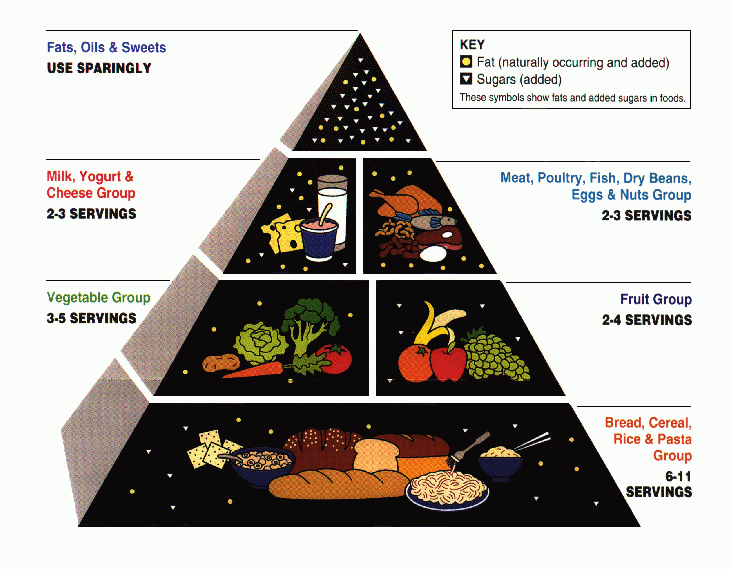
In the infamous 1992 Food Pyramid, we were told to eat 6 to 11 servings of bread, rice, cereal and pasta every day! We listened and now 60% of Americans are obese or overweight.
Mark Hyman, M.D.
Although epidemiological evidence consistently demonstrates an inverse association between the intake of whole-grain foods and abdominal obesity — among other purported benefits — findings of controlled clinical trials are inconclusive.
At the same time, there are good reasons why you should avoid grains to prevent the development of inflammation, metabolic problems and chronic diseases. What’s more, grains don’t provide any nutritional benefits that you can’t get from healthier sources of food.
In other words, the consumption of grains makes us sick, and there is no downside to cutting them out of your diet completely.
So how did we get it so wrong?
Flawed studies and pressure from the agriculture industry have convinced us that grains are a healthy part of a balanced diet. In reality, they’re a leading contributor to many of our most common ailments.
In a nutshell, a combination of flawed epidemiological or observational studies (rather than peer-reviewed double-blind studies and clinical trials), the influence of industry interests, and the fact that grains are cheap to produce and store, has created the perfect environment for the development of metabolic conditions such as obesity, diabetes, cardiovascular disease and even neurological conditions like Alzheimer’s.
In this article, we will answer the question “what are grains,” explore the history of grains, discuss their role in our diet, explore how healthy grains are, and run down the top 10 reasons why you should never eat grains.
What Are Grains?
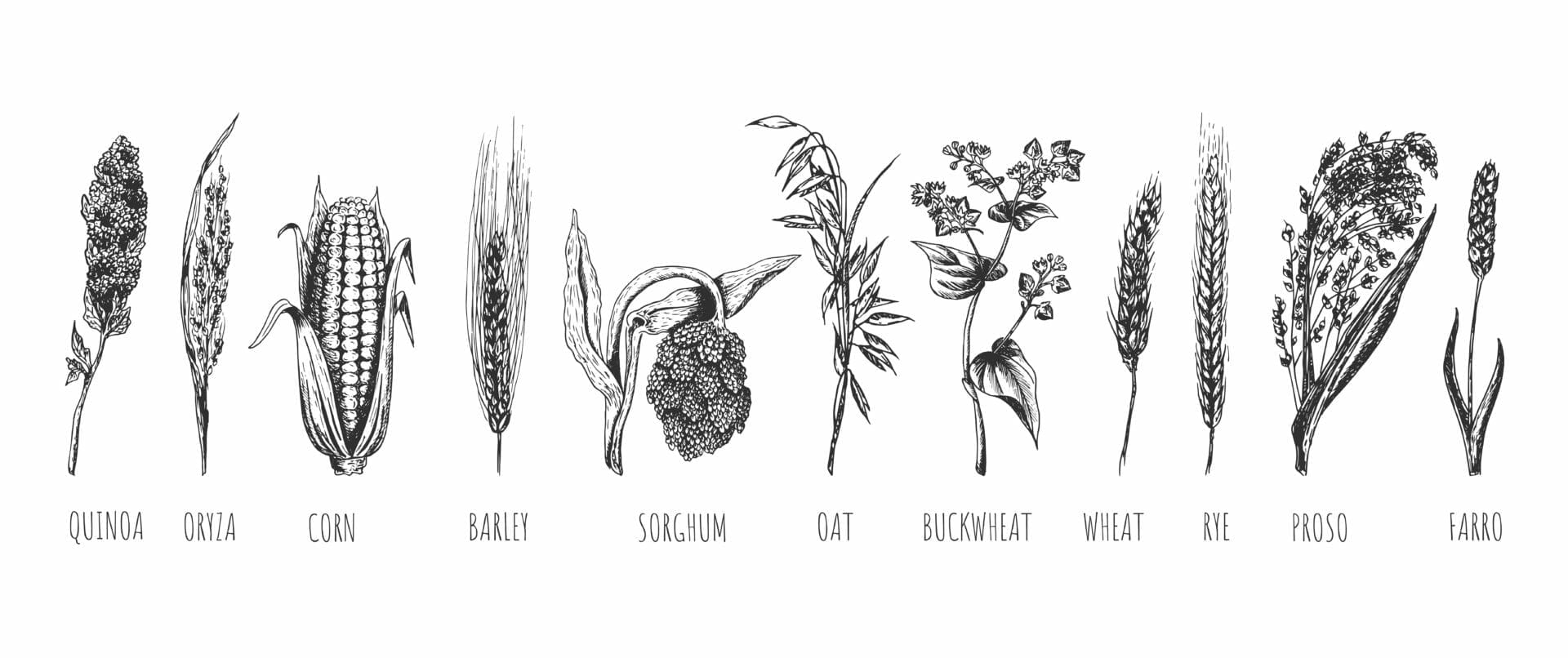
Grains are seeds, with or without hull or fruit layers, harvested for consumption. There are four classes of grains:
- Cereal: corn, millets, barley, oats, rice, teff and wheat
- Pseudocereals: chia, quinoa and buckwheat
- Legumes (a.k.a. pulses): fava beans, soybeans, peanuts, chickpeas and lentils
- Oilseeds: canola, sunflower seed, flax seed, hemp seed and poppy seed.
Whole Grains vs. Refined Grains
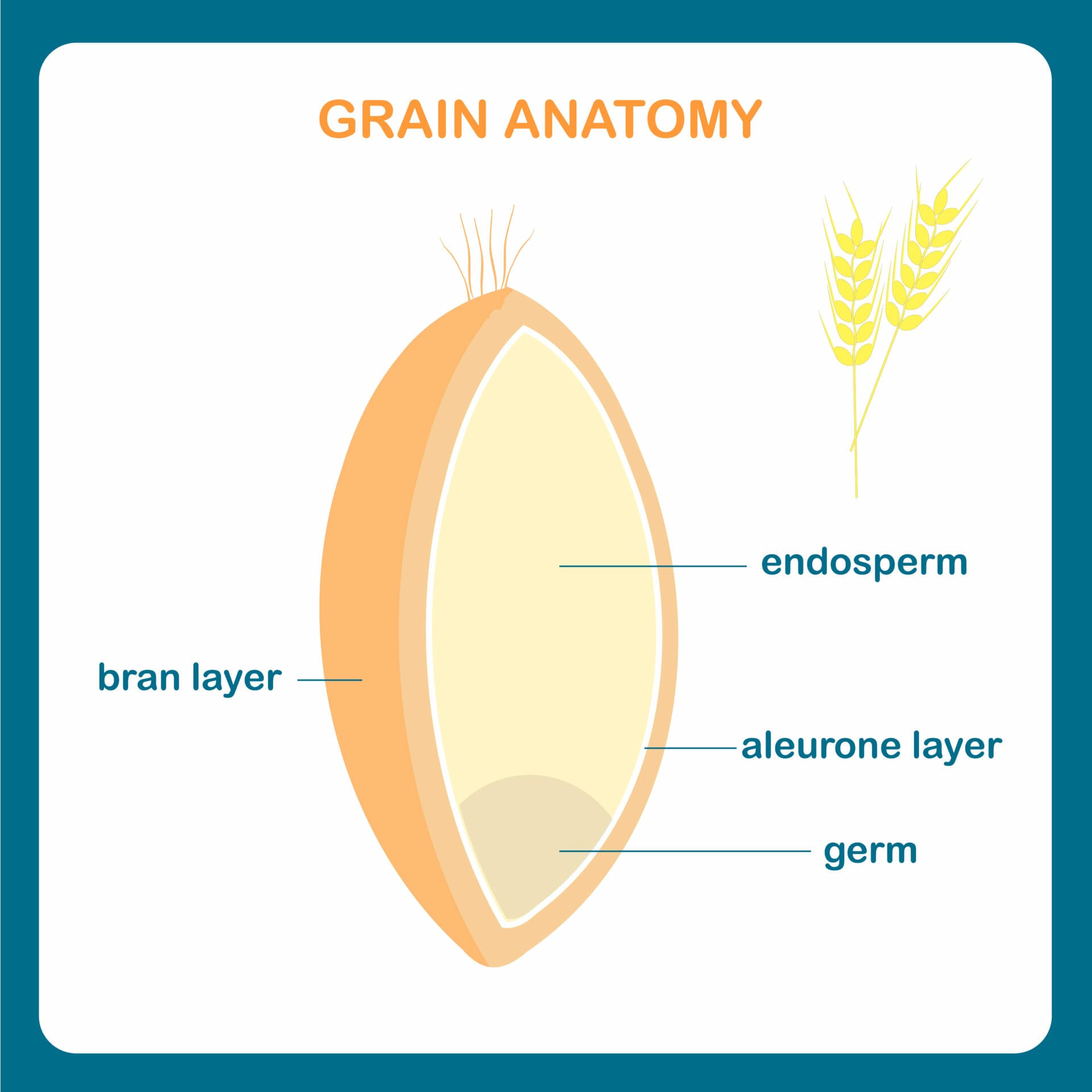
The USDA recommends making half of the grains you eat whole grains.
To illustrate the primary differences between whole grains and refined grains, you need to understand the individual components that grains possess:
- Bran: The skin of a grain, which contains dietary fiber and vitamins.
- Germ: The embryo of the grain, with the potential to develop into a plant; it contains vitamins, minerals and proteins.
- Endosperm: The germ’s main food supply, which contains primarily starch; it provides energy for the germ to grow before it’s able to acquire nutrients through photosynthesis.
Whole grains retain all three parts of the grain, while refined grains retain only the endosperm — the bran and germ have been removed, making them easier and more consistent to work with in industrial-scale food manufacturing.
Are Whole Grains Healthier Than Refined Grains?
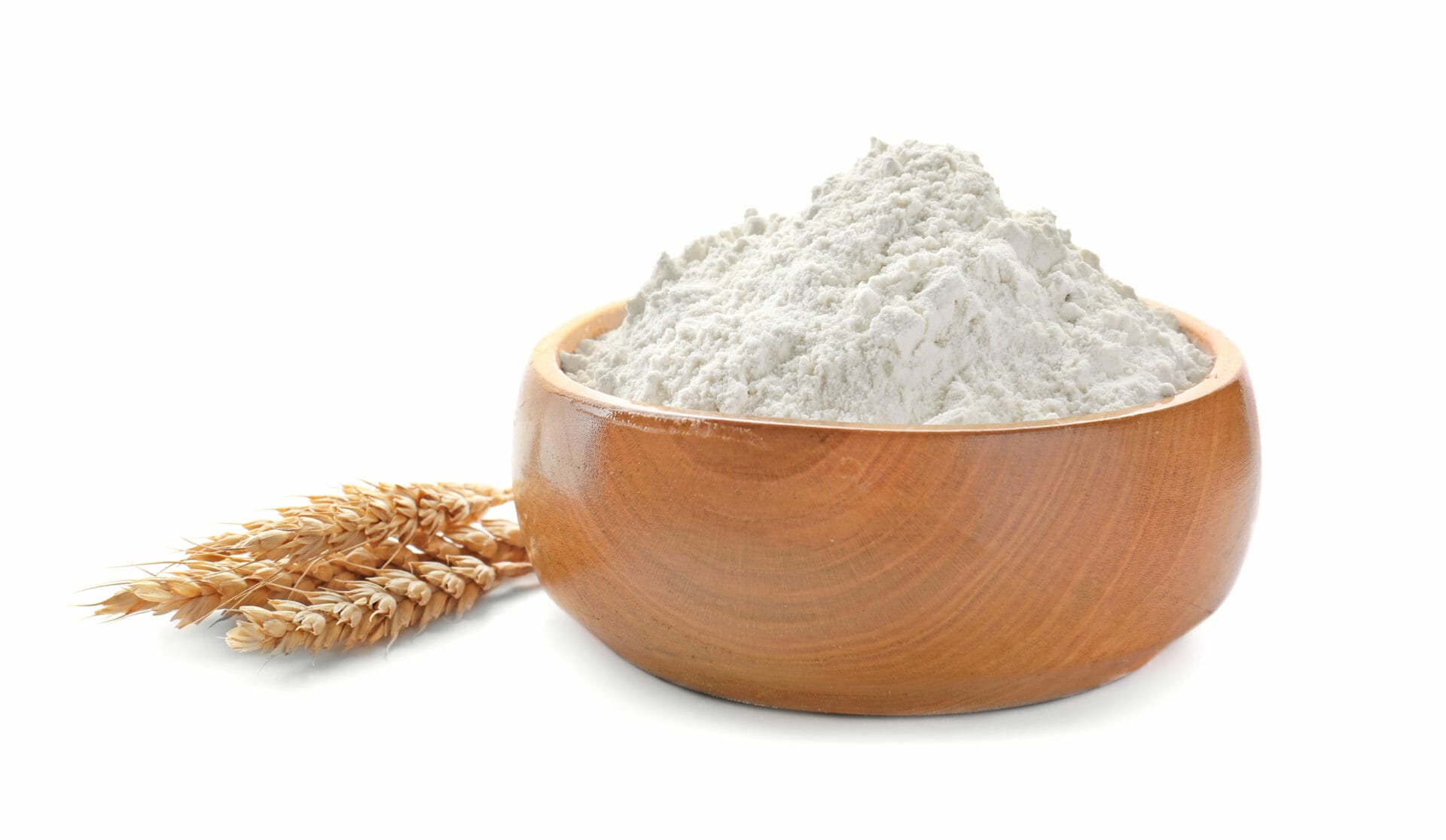
A common misconception is that whole grains are healthier than refined grains because whole grains maintain all the essential dietary nutrients such as minerals, vitamins, and proteins. Whole grains are also higher in dietary fiber than refined grains, theoretically slowing the breakdown and absorption of the starch from the endosperm.
One study on 46 individuals found that eating whole grains instead of refined grains lowered the level of low-density lipoprotein (LDL), triglyceride (fat), blood sugar, and insulin levels.
However, the study’s authors admitted that, “Given the small sample size and limited sample collection, future research would be necessary to definitively describe changes in health parameters seen with increased whole grain consumption.”
The USDA funded the study, arguably to make its case for promoting the consumption of whole grains.
A 2002 study suggested that eating whole grains is also associated with a lower risk of diabetes in men. Guess how the researchers conducted the surveys? By asking participants to fill out a questionnaire every four years about what they ate over the previous 48 months.
As you can imagine, such observational studies don’t provide a lot of reliable data. Do you remember what you ate four weeks ago, let alone four years ago?
“Intakes of whole and refined grains, measured every four years by use of food-frequency questionnaires, were used to predict subsequent type 2 diabetes risk through multivariate analysis.”
Study: Whole-grain intake and the risk of type 2 diabetes: a prospective study in men.
Additionally, many of the studies the USDA funds and relies on completely ignore the primary issues associated with grains, such as their inflammatory and addictive proteins and carbohydrates.
More importantly, whole grains are chock-full of the plant’s defense chemicals (a.k.a antinutrients) that wreak havoc in your gut and contribute to chronic inflammation. You can learn more about that in my article comparing plants vs. meat. As a result, I highly recommend staying away from whole grains. If you must make grains an occasional part of your diet, I recommend white rice because it has comparatively low levels of antinutrients.
How Grains Became Part of the Human Diet

From an evolutionary perspective, humans did not develop to thrive on grass. But that’s what grains are — the seeds of grass. Case in point: around 2.5 million years ago, the Hominin Australopithecus gave rise to both the Homo lineage and the Paranthropus genus. The former evolved into meat-eaters (and ultimately us), while the latter evolved into plant-eaters and went extinct about a million years ago.
Grain consumption is a relatively recent phenomenon in human history. Our ancestors were hunter-gatherers and did not eat bread and cereal for breakfast, nor pasta for dinner. They hunted animals and caught fish for protein, and they gathered nuts, fruit and vegetables to avoid starvation in the event of an unsuccessful hunt.
China and Kurdistan were the first areas to use domesticated grains. Kurdistan — which stretches across parts of modern Turkey, Iraq, and Iran — domesticated wheat around 10,000 years ago.
The Chinese domesticated grains around the same time as the Kurds, primarily through the farming of rice. The indigenous people of Central and South America domesticated corn around 8,700 years ago.
Grain consumption is a relatively recent phenomenon in human history. Our ancestors were hunter-gatherers and did not eat bread and cereal for breakfast, nor pasta for dinner.
The growing of grains such as wheat gave rise to ancient civilizations through excess food production and storage. Agriculture allowed human beings to remain at the same geographic location over time, instead of having to migrate around different areas as hunters and gatherers, giving rise to the earliest “urban” settlements.
Importantly, excess wheat and rice supplies allowed some people to focus on tasks other than hunting and gathering food, giving rise to classes such as artisans, warriors, builders and merchants. Each of these classes played key roles in the development of the earliest civilizations.
Why Are We Eating So Many Grains?
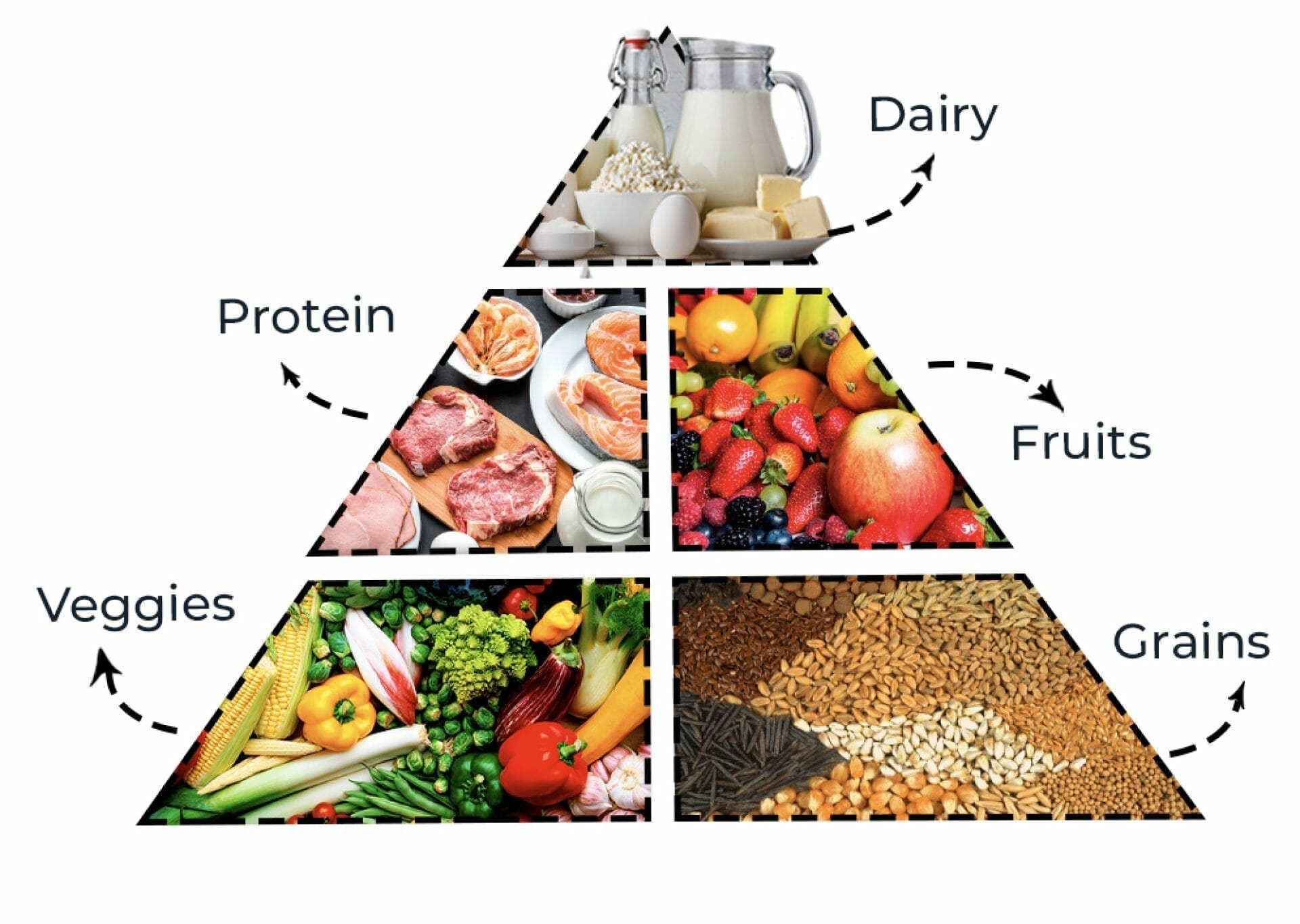
Looking at the original food pyramid and dietary guidelines published by the USDA in the 1990s, it seems like the most critical component of a healthy diet is grains (which are located at the base of the pyramid). However, that was not always the case. Earlier recommendations, published by the USDA in the 1940s, listed grains as an equal partner to other food groups.
So what made the USDA emphasize a grain-based diet?
The Green Revolution, an agricultural revolution in the 1940s and 1950s, increased the production of grain crops such as wheat and rice around the world. Technologies such as chemical pesticides and fertilizers, along with new species of “high-yield” crops using techniques like hybridization, were the main driving forces of the Green Revolution.
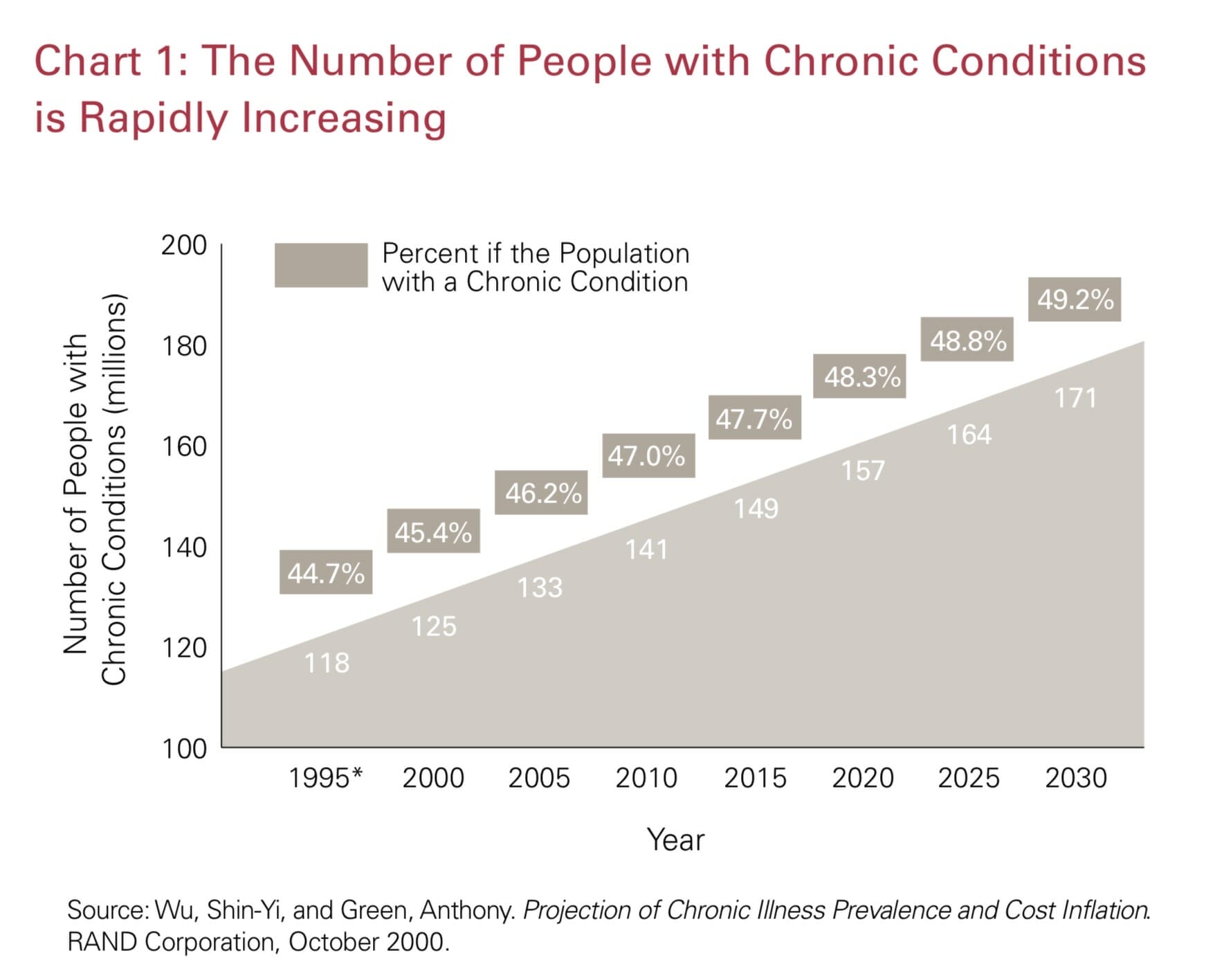
At the same time, the prevalence of chronic illnesses such as diabetes, digestive health conditions, obesity, cardiovascular disease, and autoimmune disorders soared.
Grains have been cheap throughout human history. As technologies advance, the price of grains decreases. It’s easier for a government to promote cheap food than expensive food like meat. As stated in the introduction, the USDA advertised grains as inexpensive sources of essential nutrients.
However, you can get vitamin B and minerals from animal-based sources as well, including eggs, meat and organs. Grains just happen to be easier to store and transport.
Economically, grain production is an essential part of the U.S. economy, which exports the most corn and soybeans in the world. The U.S. also exports a substantial amount of wheat and many other types of grains. As a result, the food and agricultural industries in the United States have interests in promoting grain consumption both at home and abroad.
How Grains Defend Themselves: Antinutrients

So the question is: instead of eating refined grains, will you be healthier eating whole-grain cereal and whole-grain pasta? Not really. While whole grains retain many vitamins and minerals and are high in fiber, they also have unhealthy chemicals that can make humans sick.
These chemicals are called antinutrients. Some of them can trigger or exacerbate autoimmune diseases, while others block the absorption of crucial dietary vitamins and minerals.
Grains contain these harmful chemicals as a result of evolution: they defend the plants from predators and help ensure the survival and propagation of their genes.
In comparison, animals deploy the fight or flight response when encountering danger. Deer run, turtles hide in their shells, skunks fart with smells that will scare away most of the other animals, and humans protect themselves through technologies such as buildings and guns.
Plants also have ways to defend themselves from predators and ensure the survival of their genes. While the fruits of many plants are edible, their seeds are usually indigestible — a tactic plants deploy to spread their offspring.
Other plants develop hard shells around their seeds, such as nuts, to prevent animals from eating them. Some plants even secrete chemicals that will trigger symptoms such as nausea and vomiting in the animals that consume them to deter further consumption.
So how do plants with grains defend their seeds from animals that eat grains? The answer is through antinutrients. While some animals, such as birds and insects, have adapted to digesting these nasty chemicals, humans have not.
Nutrients in Whole Grains
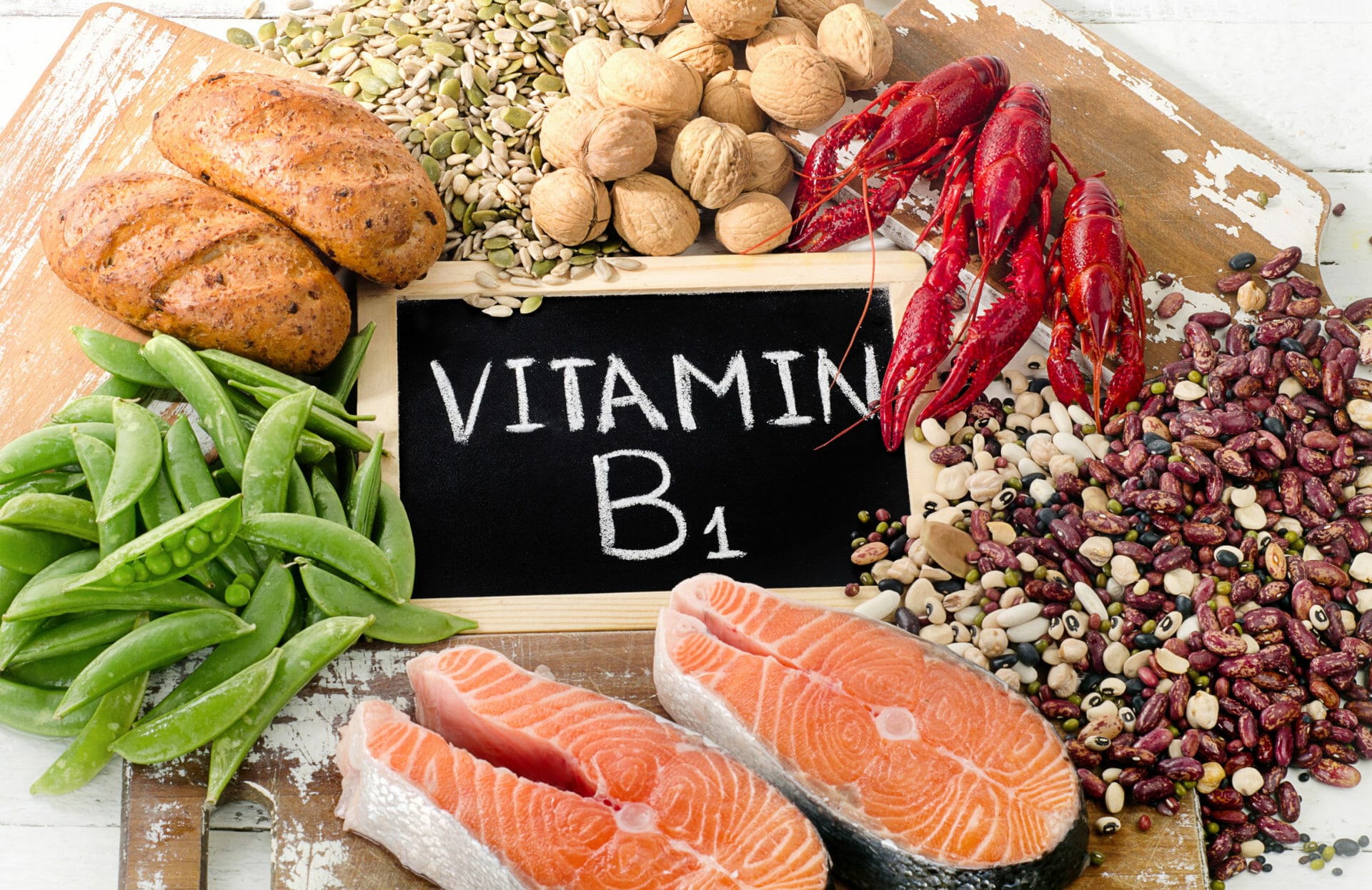
The primary argument in support of the health benefits of grains and thus the broad consumption of whole-grain foods is that they’re an excellent source of nutrients, including fiber, vitamins and minerals. So let’s take a look at the nutrient profiles of grains and compare them to healthier sources of food.
I relied on the USDA Food Composition Databases for the information below.
Nutrients in Oats
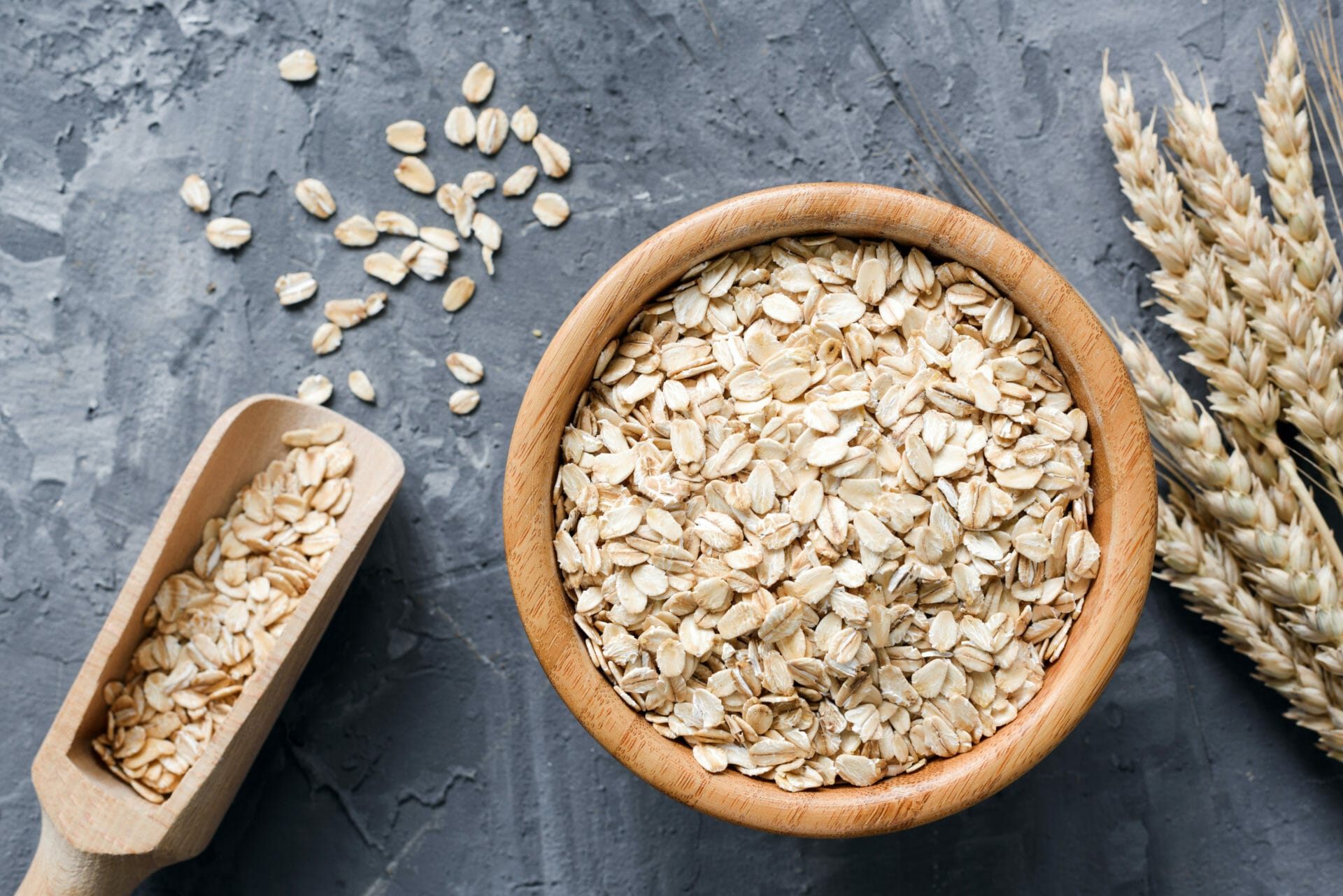
Oats are a popular breakfast cereal, and many people think eating steel-cut oats (rather than the more common version, rolled oats) is healthy. While oats might be the lesser evil when compared to gluten-containing grains such as wheat, they are far from being good for your health. Below are a few nutritional highlights of one cup of steel-cut oats:
- 609 calories.
- 70% of those calories — or a whopping 103 grams — stem from carbohydrates, including 16.5 grams of fiber.
- Rich in vitamins B1 (thiamin), B5 (pantothenic acid) and B9 (folate).
- Rich in copper, non-heme iron, manganese, magnesium, phosphorus, potassium and zinc.
- High in inflammatory omega-6 fatty acids.
- Omega-3 to omega-6 ratio of 1:22 — you want to be as close to 1:1 as possible.
- Glycemic index of 57 — the GI of table sugar is between 58 and 65.
Nutrients In Whole-Wheat Bread

Whole-wheat bread is better than white bread because it’s high in fiber, right? Unfortunately, that’s a misconception. Simply look at the nutritional data of three slices of whole-wheat bread and notice its impact on your blood sugar levels. More importantly, humans don’t need fiber to enjoy optimal health.
- 207 calories.
- 67% of those calories — or 35 grams — are from carbohydrates, including 6 grams of fiber.
- Rich in vitamin B1 (thiamin).
- Good source of vitamins B2 (riboflavin), B6, and B9 (folate).
- Rich in manganese and selenium.
- Good source of copper, magnesium and phosphorus.
- Omega-3 to omega-6 ratio of 1:23 — you want to be as close to 1:1 as possible.
- Glycemic index of 74 — that means whole wheat bread jacks up your blood sugar faster than table sugar!
Grains vs. Red Meat
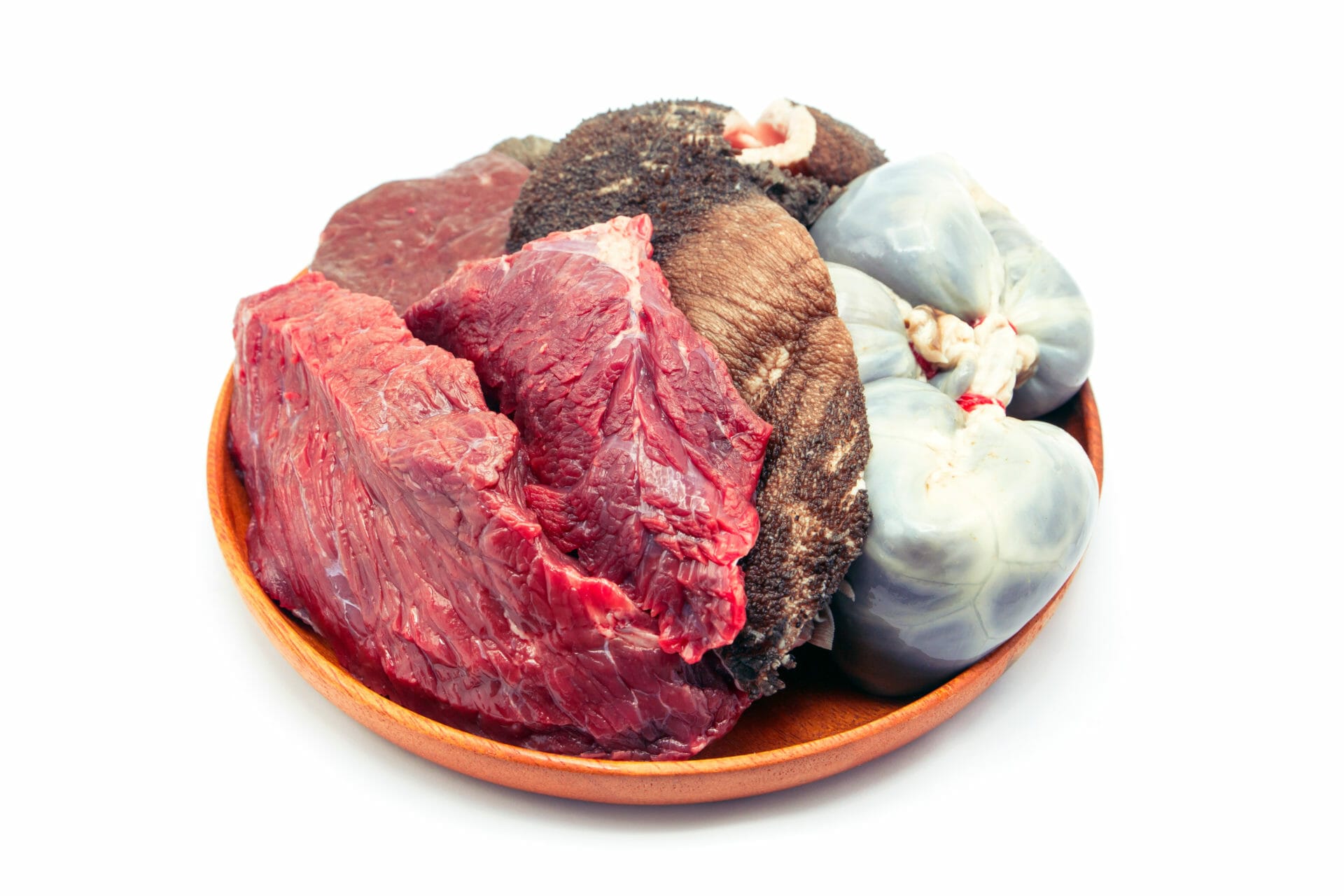
Now let’s compare that to 214 grams of a good old steak from a pasture-raised cow:
- 250 calories with zero simple or complex carbohydrates.
- Rich in vitamins B3 (niacin), B5 (pantothenic acid) and B12 (cobalamin).
- Good source of vitamins B1 (thiamin) and B9 (folate).
- Rich in heme-iron, magnesium, phosphorus, potassium, selenium and zinc.
- High in heart-healthy omega-3 fatty acids.
- Glycemic index of 0 — that means red meat doesn’t raise your blood sugar.
As you can see, red meat is far superior to wheat and more nutrient-dense calorie-for-calorie than oats. Most importantly, meat has absolutely no simple or complex carbohydrates. That means it doesn’t increase your blood glucose levels and it doesn’t trigger an insulin response. Add in some organ meat (maybe in the form of freeze-dried beef liver capsules) and you’ll get all the nutrients you need — just from meat.
But what about the fiber you get from consuming grains? Despite what you might have been told, humans don’t need fiber for optimal health. As I discussed in my article about the lack of fiber on a carnivore diet, the latest scientific evidence backs up what we’ve observed from human evolution: people don’t need fiber to enjoy good gut and cardiovascular health. It’s a myth that has finally been busted.
As a result (and unlike grain foods) red meat isn’t a contributing factor to insulin resistance, which is one of the predominant causes of many metabolic diseases (the consumption of polyunsaturated fats being the other). If that doesn’t convince you to stop eating grains, here are 10 more reasons why you should seriously consider it.
Top 10 Reasons Why You Should Avoid Grains
1. Gliadin-Derived Opioid Peptides Stimulate Appetite
That’s a mouthful, so let’s break it down.
Grains contain prolamin proteins that are chemically similar to opioids, and which stimulate your appetite, making you crave more carbs. As a result, you overeat. Prolamins are the primary reason why people sometimes go nuts at the breakfast buffet or can’t stop eating pizza.
Every time I have had traditional wheat-crust pizza in the past, I overate because I couldn’t stop!
And have you ever wondered why, in many restaurants, you get a bread basket before your meal? It’s to stimulate your appetite!
Gliadin in wheat, hordein in barley, secalin in rye, zein in corn, and avenin in oats are all examples of prolamin proteins. When digested, these proteins create opioid-like molecules that can bind to opioid receptors, exacerbating the carb-craving effects of the grains. That’s why people crave dessert after eating a full course of pasta. And unfortunately, opting for whole-wheat pasta over the standard fare does nothing to lessen this effect.
People who start low-carb diets often suffer from carbohydrate withdrawal when they quit grains. This withdrawal can have palpable symptoms, including low energy and fatigue.
Here is a link to a good video from Dr. Davis explaining this phenomenon.
2. Proteins Such as Gluten Can Trigger Autoimmune Diseases
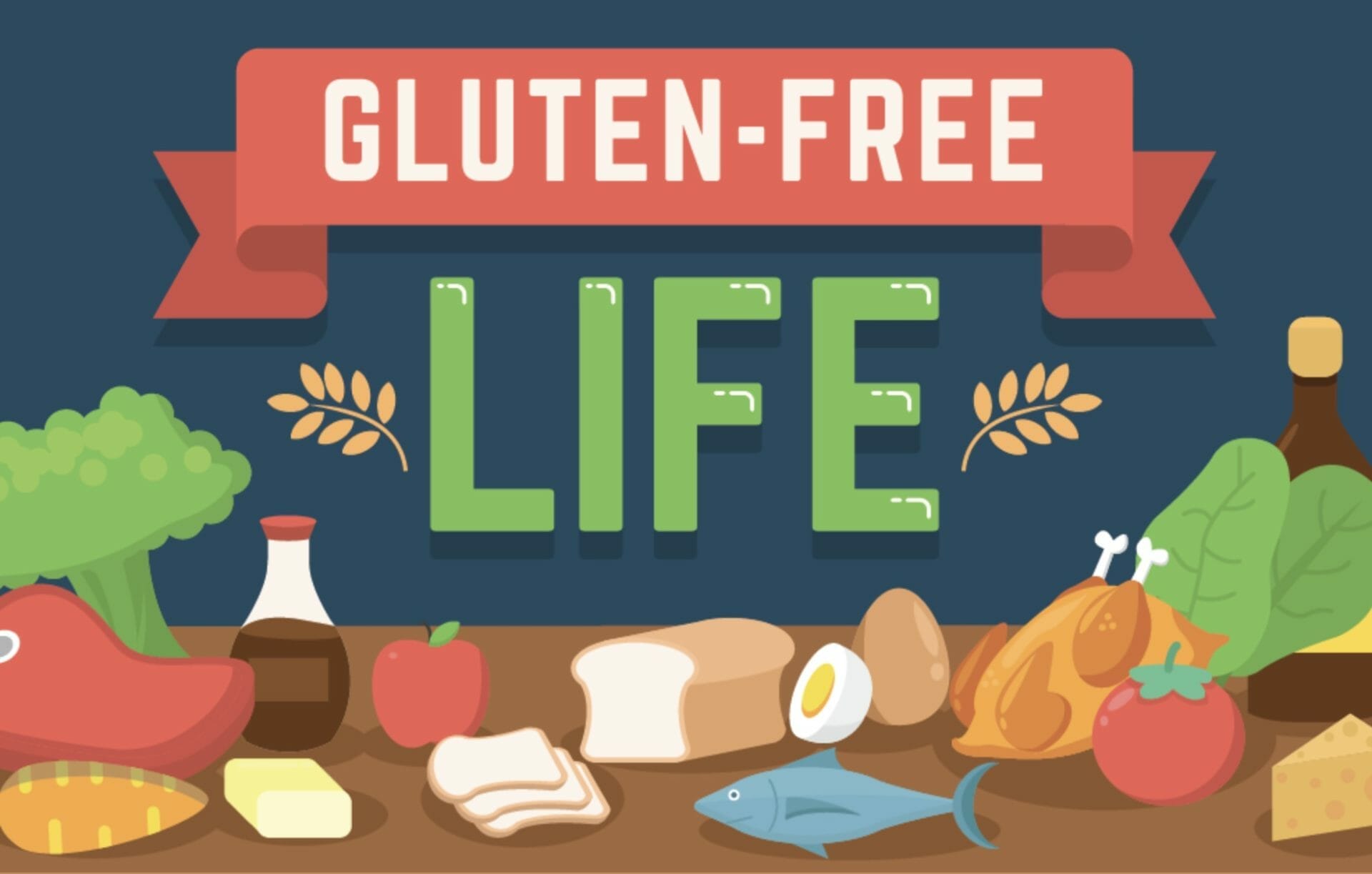
Perhaps the most infamous antinutrient is gluten, a plant-based protein that exists in many grains, including wheat, rye, oats and barley. If you’re not specifically searching for breakfast cereals and baked goods made with ingredients like gluten-free flour, you’re most likely consuming gluten. The three most common gluten-triggered conditions are celiac disease, gluten sensitivity, and wheat allergy.
Celiac Disease
The breakdown products in gluten can trigger autoimmune conditions such as celiac disease. After the consumption of gluten-containing grains, an enzyme called tissue transglutaminase (tTg) in the human gut breaks the gluten down into two proteins: glutenin and gliadin. Some people, like those with celiac disease, are sensitive to gliadin and produce antibodies to attack it.
Unfortunately, the same antibodies also attack tTg enzymes and organs (such as the linings of the small intestine), making celiac an autoimmune disease. Gliadin can also trigger other autoimmune conditions, such as diabetes and rheumatoid arthritis.
People with celiac disease develop gastrointestinal (GI) symptoms and digestive health problems, such as diarrhea and bloating, and other symptoms of GI malabsorption, such as weight loss and anemia (low red blood cells). The best treatment for those with celiac disease is to adopt gluten-free diets and avoid products with gluten-containing ingredients altogether.
Based on official numbers, about 1% of the United States population (or 3 million people), has celiac disease.
Gluten Sensitivity
Gluten sensitivity, a milder condition than celiac disease, can also occur for people who ingest gluten-containing grains. The symptoms involve abdominal pain, bloating, diarrhea and constipation. Like celiac disease, the solution to gluten sensitivity is a gluten-free diet. As many as one in eight people suffer from gluten sensitivity in the United States.
Wheat Allergy
On the other hand, a wheat allergy is a more severe reaction to wheat and gluten than celiac disease. People with a wheat allergy have a rapid reaction to wheat and other gluten-containing grains. While it takes days or months for celiac disease and gluten-sensitive people to become symptomatic, people with a wheat allergy become symptomatic within minutes of wheat contact.
Symptoms include skin rashes, running nose, nausea, and vomiting. Less common but more severe symptoms include suffocation, coma, and even death. A 2019 study estimated that about two million people in the U.S. have a wheat allergy.
3. Wheat Germ Agglutinins are Inflammatory
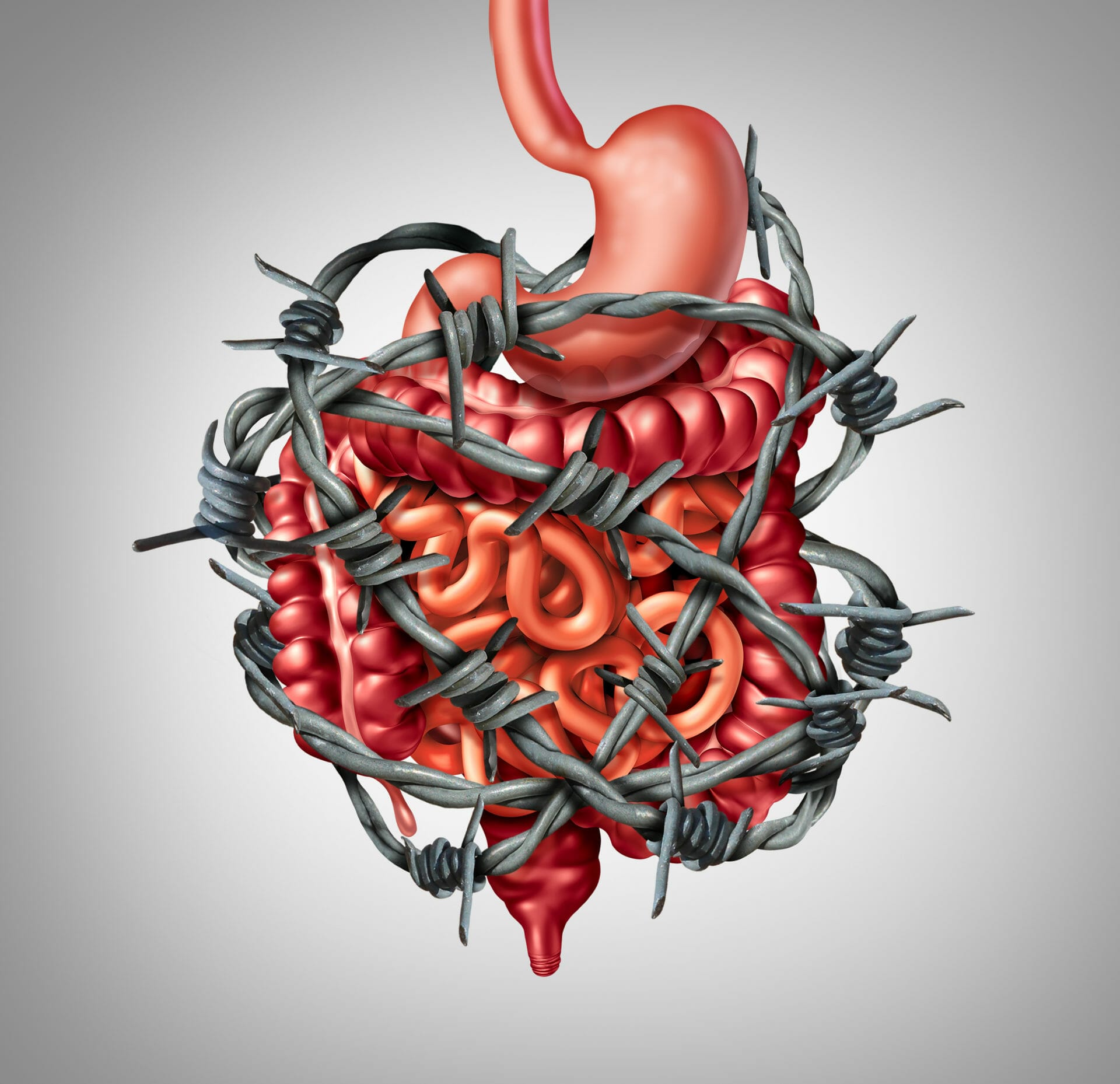
Grains contain many inflammatory chemicals, like gluten and wheat germ agglutinins. Wheat germ agglutinin (WGA), as the name suggests, is a protein found in the germ of the wheat. WGAs are also present in cereal grains like barley, rye and rice, and can damage the body in many ways.
Like gluten, WGAs can trigger inflammatory reactions in the intestines. They can stick to gut cells and damage the gut as gluten does in celiac disease, leading to “leaky gut.” This allows WGAs and other undigested proteins to enter the bloodstream, leading to autoimmune reactions.
Once in the bloodstream, WGAs cause clotting of blood cells, which increases the chances of heart disease and stroke. WGAs also increase the sugar conversion to fat and inhibit fat breakdown in the body.
WGAs also block vasoactive intestinal peptide (VIP) receptors, leading to problems like weakened immunity of the gut, increased cortisol production, asthma, and increased risks of gut autoimmune diseases (celiac disease, Crohn’s disease, and ulcerative colitis).
Finally, WGAs can inhibit the release of bile from the gallbladder, leading to higher gallstone risks.
4. Grain Carbohydrates Lead to Metabolic Syndrome

Both whole grains and refined grains contain significant amounts of starch and sugar, and are high in calories. Amylopectin and amylose are two sugar components of starches in grains. Amylose is a straight-chain sugar molecule that’s more resistant to digestion, while amylopectin is a branched-chain sugar molecule with greater surface area that breaks down quickly for absorption.
Two slices of whole wheat bread raise your blood sugar higher than 6 teaspoons of table sugar.
Dr. William Davis, M.D.
80% of the starch in grains is amylopectin, which leads to a more rapid rise in blood sugar when consumed. Amylopectin-rich food also leads to an increase in cholesterol levels, an increase in insulin resistance, and more body fat production in the long run.
What’s more, amylopectin triggers the formation of small LDL (low-density lipoprotein) particles. In comparison, eating fat causes large LDL particles.
What’s the difference between small and large LDL particles?
Large LDL particles persist in the bloodstream for approximately 24 hours after fat consumption. Small LDL particles can persist for five days or more, and they’re more adherent to the components of artery walls. That’s where LDL gets it bad rap from. However, it’s not the LDL from saturated fat intake that’s the issue. The problem is the small LDL particles from carb consumption that can clog up your artery walls, raise your risk of cardiovascular disease, and cause life-threatening issues.
Additionally, the consumption of carbohydrates triggers a massive increase in blood triglyceride levels about six to eight hours after consumption. It’s a process called De Novo Lipogenesis, and it’s uniquely related to the consumption of carbs — you won’t see it after consuming dietary fat.
The rapid increase in blood triglycerides is followed by a massive influx of small LDL particles. That, as we have learned, is what increases your risk of heart disease.
Benefits of grain-free diets like the paleo diet include lower blood sugar levels, lower insulin resistance (making weight-loss easier), and decreased risk of heart disease.
5. Grain Consumption Increases Rates of Chronic Diseases
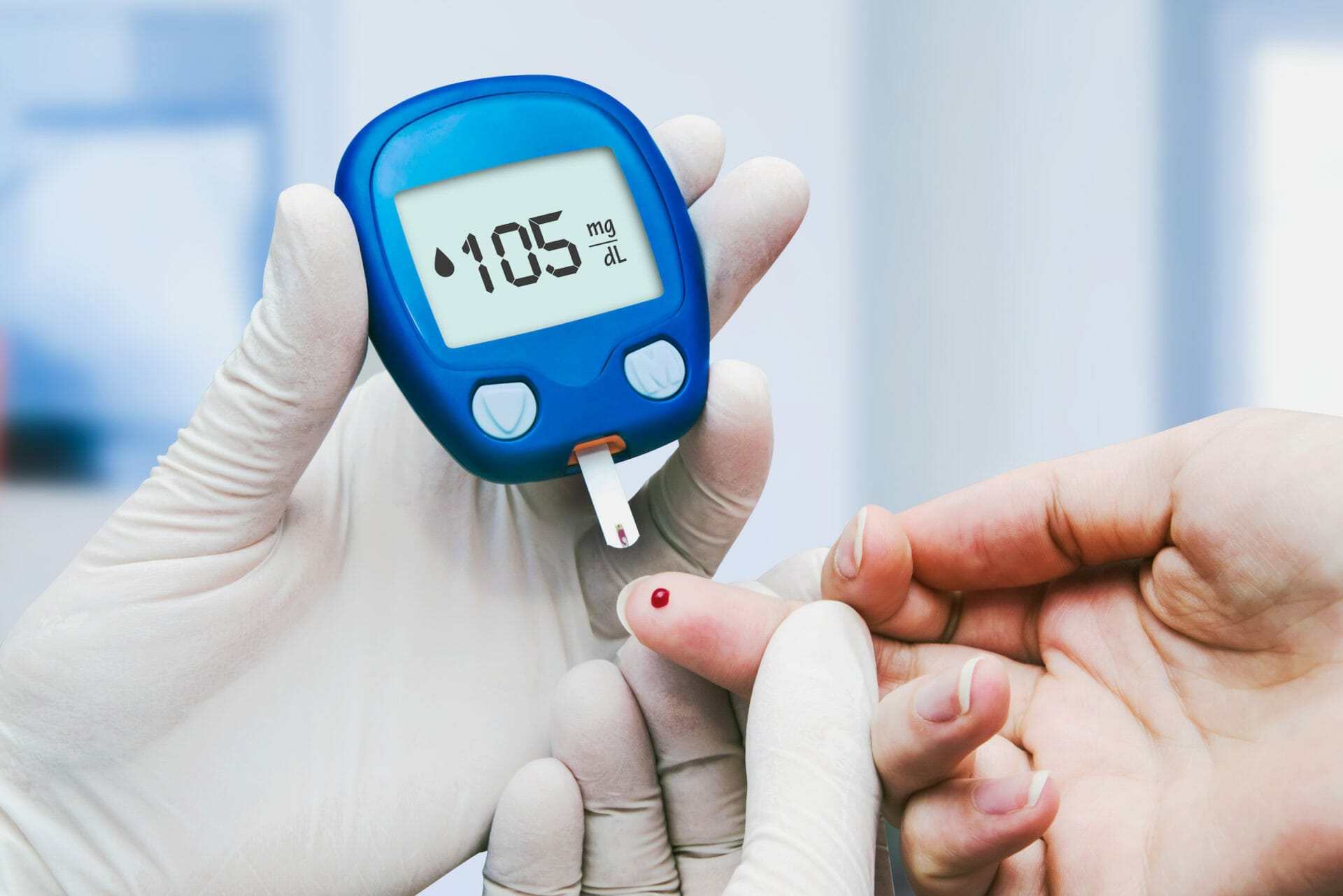
If grains can lead to high blood sugar and cholesterol, then their consumption can contribute to many chronic illnesses, including obesity, diabetes, heart disease, and autoimmune disorders. These chronic illnesses have become increasingly prevalent over the past 100 years, thanks in no small part to the Green Revolution and the dramatic increase in the consumption of high-calorie foods like wheat, rice, corn and soybeans.
The obesity rate for men in the United States rose from around 10% in the 1960s to over 30% in the 2010s. For women, the rate rose from 15% to over 40% during the same period.
According to the CDC, among the general U.S. population, the prevalence of diabetes rose from less than 1% in the 1950s to over 7% in the 2010s in the general population in the United States. There is a strong correlation between grain production and metabolic illnesses in the U.S. and around the world.
6. Isoflavones Have Estrogen-Like and Thyroid-Suppressing Effects
Soybeans and soy products contain isoflavones, which can mimic estrogen in mammals. Isoflavones can also convert to goitrogen when digested by gut bacteria in humans. Goitrogen is a chemical that suppresses thyroid function in the human body.
People with an estrogen-sensitive disease like breast cancer or hypothyroidism (a condition of low thyroid function) should talk to their physicians before consuming soybeans or soy products.
7. FODMAPs Can Upset the Stomach
Some particles of grains give people stomach problems, just like lactose from dairy products. FODMAPs, which stands for “Fermentable Oligo, Di, Mono-saccharides, And Polyols,” are sugar molecules found in grains like wheat and legumes. These sugar molecules are resistant to digestion and absorption in human guts.
As a result, gut bacteria consume FODMAPs and produce hydrogen gas in the intestines, leading to symptoms such as bloating and stomach pain. FODMAPs also retain water, leading to diarrhea.
People with irritable bowel syndrome (IBS) are more likely to be FODMAPs sensitive and would benefit from a low-FODMAP diet, which shares similarities with the paleo diet.
Related: Here are the six steps I took to cure my IBS.
8. Antinutrients and Malabsorption
Grains contain numerous antinutrients, which can cause GI issues and block the absorption of essential minerals, such as calcium and magnesium.
You can learn more about antinutrients and their effect on the human body in my article titled “Plants vs. Meat.”
9. The Dangers of GMO Grains

The grains that exist in the United States today bear little resemblance to the ancient grains our ancestors ate around 10,000 years ago. Farmers have massively changed grains over the years, through techniques like hybridization and genetic modification. Two kinds of grains that are genetically modified are corn and soybeans.
Monsanto introduced GMO corn in 1996 and GMO soybeans in 1998. Think about it — if humans have not adapted to domesticated grains in 10,000 years, how can our bodies get used to GMO grains in 25 years?
GMO corn produces chemicals such as Bt-toxin, which is designed to kill pests. Bt-toxin kills insects by attacking their guts. Coincidentally, a 2013 study showed that Bt-corn could also be toxic to human cells.
GMO crops have resistances to herbicides like glyphosate, which can disturb the beneficial bacteria and promote the growth of harmful bacteria in human guts, leading to chronic inflammation and autoimmune diseases.
Some studies also suggest that glyphosate can trigger symptoms in humans that resemble those in celiac disease and gluten intolerance. CDC statistics also show a strong correlation between the amount of glyphosate applied to wheat the and incidence of celiac disease.
Glyphosate and Bt-toxin also damage the small intestine in animal models. Mice that ate genetically modified soybeans had a decreased production of digestive enzymes.
10. Frankenwheat
At the moment of writing this article, no GMO wheat exists commercially in the United States. However, the wheat we eat today is no better than GMO corn and soybeans. Frankenwheat, a term used to describe wheat that has gone through multiple hybridizations, is particularly high in both gluten and starch.
Hybridization (or cross-breeding) of different kinds of wheat increases the variety of glutens in Frankenwheat, which is bad news for gluten-sensitive people and those who have celiac disease.
Hybridization of wheat with the goal of growing bigger wheat grains also increases the starch and amylopectin content, making it less attractive for people suffering from obesity and diabetes.
The Benefits of a Healthy, Grain-Free Diet

Looking at everything mentioned above, it’s time to summarize the benefits of a grain-free diet.
1. Weight-Loss
Grains are high in calories from carbohydrates. By switching to a grain-free low-carb diet (like a paleo or ketogenic diet), your body starts burning fat instead of carbohydrates. People on grain-free diets often lose a few pounds of weight in weeks. A 2014 study showed obese postmenopausal women who switched to paleo diets lost on average of 14 pounds of weight in six months.
2. Improved Cardiovascular Health
A low-carb diet reduces blood cholesterol and supports weight loss, reducing the risk of heart disease.
3. Better Blood Sugar Control
Reduction of starch and amylopectin intake lowers the chances of high blood sugar and leads to better blood sugar control in people with diabetes. A 2009 study showed people who were on paleo diets had improved blood pressure and sugar tolerance and increased insulin sensitivity.
4. Improvement in Autoimmune Conditions
Eating food without gluten, WGAs and lectins lowers the risk of intestine inflammation and autoimmune diseases such as celiac disease and gluten sensitivity. A decrease in grain consumptions also decreases the number of proteins that act as allergens.
5. Enhanced Nutrition Absorption
Avoiding antinutrients such as phytate, oxalate, and trypsin inhibitors leads to better digestion and absorption of nutrients, such as minerals and protein.
6. Less Food Cravings
By refraining from eating grain foods that contain prolamin proteins and carbohydrates, one can (in general) prevent the vicious cycle of addiction to high carbohydrate food and the subsequent consumption of yet more grains.
Should Infants and Kids Eat Grain-Free?

The short answer is “yes.” Just like adults, infants and kids don’t need grains to fulfill their nutritional requirements. My whole family has been on an animal diet for a few years, including both of our kids. So let me tell you an anecdote about the discussions we had with various nutritionists about pasteurized dairy and grains in our kids’ diet.
Our youngest son, Lucas, was born prematurely. He was small for his gestational age. He’s always been on the smaller side, probably due to my wife’s genes (she isn’t tall either).
However, because of his prematurity, our doctor recommended visits to a nutritionist as part of his care. Not to our surprise, his nutritionist learned her trade based on the USDA “healthy” eating guidelines, the standard government-sponsored dietary pattern, and the Food Pyramid/MyPlate.
Needless to say, we didn’t see eye-to-eye on numerous issues, including the need for dairy and grains.
During the second visit to the nutritionist, the subject of table food (solids) came up, and she boldly claimed that removing any food group from Lucas’ diet could potentially harm his growth.
Specifically, she objected to removing grains and legumes, as they apparently provide essential nutrients that cannot be found in any other foods. This time she zeroed in on the importance of B vitamins. To make her case, she sent a link to a study called “B Vitamins and the Brain: Mechanisms, Dose, and Efficacy—A Review.”
Of course, I took the time to read the study. Its main takeaways are:
- All B vitamins are important, not just the popular ones.
- It’s still unclear what the daily recommended dose for the less popular B vitamins is.
- The Mediterranean Diet promotes better absorption of B vitamins than a standard Western diet.
While I wholeheartedly agree with the study, nowhere does it say that grains and legumes are what makes the Mediterranean Diet so healthy — nor does it say that removing those potentially inflammation-causing foods from the diet prevents one from getting sufficient B vitamins. In fact, I took the time to find the top 10 foods that contain each B vitamin.
Here’s a list of the top grain-free (mostly paleo-friendly) foods that are rich in B vitamins:
- Vitamin B1: fish, pork, seeds.
- Vitamin B2: cheese, almonds, beef.
- Vitamin B3: fish, poultry, pork.
- Vitamin B5: mushrooms, cheese, oily fish.
- Vitamin B6: seeds, nuts, fish, poultry.
- Vitamin B9: dark leafy greens, asparagus, lettuce, avocado.
- Vitamin B12: shellfish, liver, fish, crab, red meat.
Ultimately, we decided not to include grains in our kids’ diets. They are eight and ten years old now, and both are mentally and physically on top of their game. They consume grass-fed beef liver on a daily basis (one of the best sources of many B vitamins), in the form of freeze-dried beef liver capsules.
What to Eat Instead of Grains
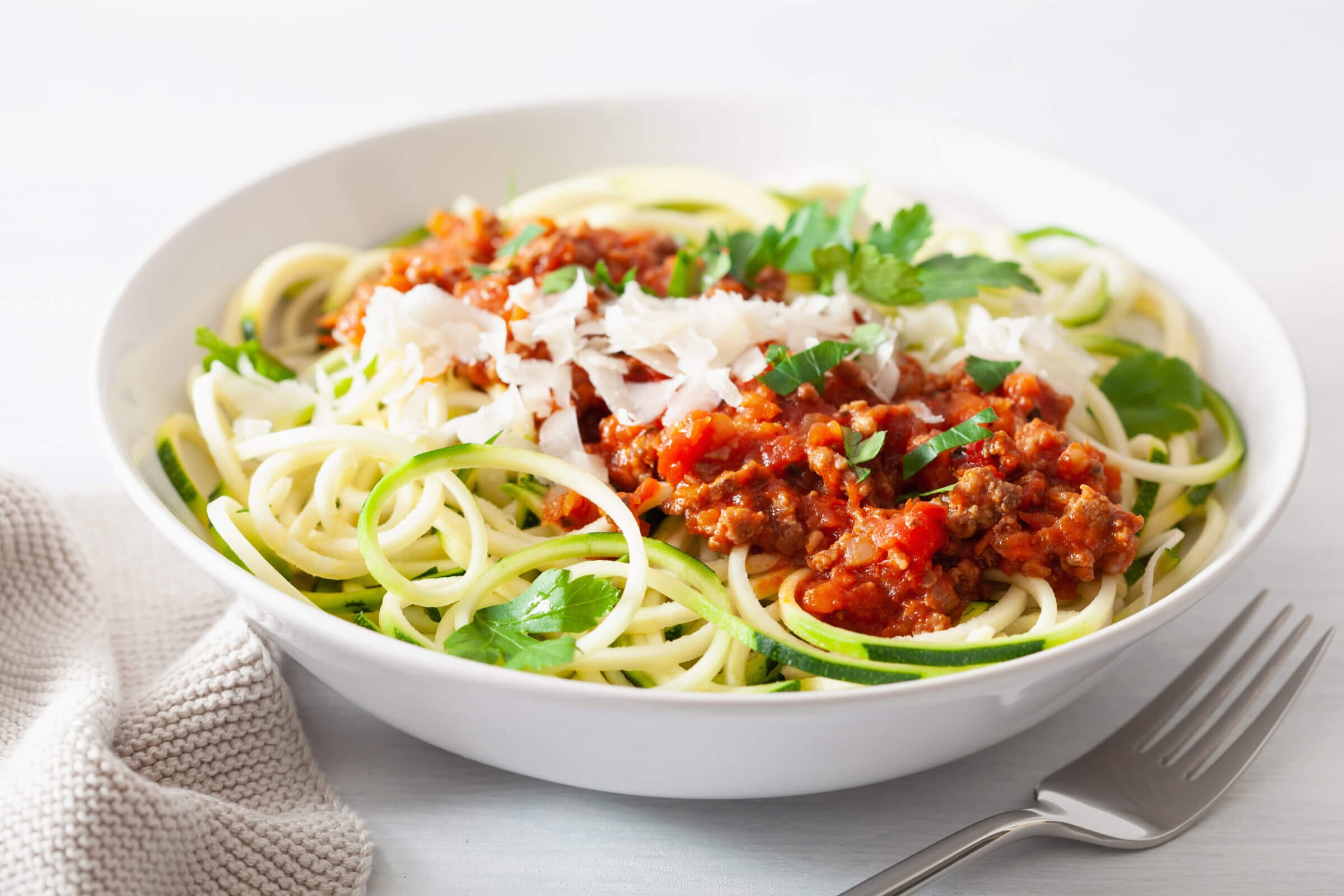
Grain products — especially those made with refined flour and refined grains — are low in dietary nutritional value, while grain products rich in whole grains are full of harmful proteins.
So my recommendation is to cut most (if not all) grains from your diet, and to consume meat, organs and seasonal sweet fruits instead. But if you can’t go cold turkey and would rather transition away from grains over the course of a few weeks, here are some tips and pointers.
Whole grains with fewer proteins (such as white rice) are a better choice than grains that are high in protein content (like wheat germ and rye) because they have less antinutrient content. However, most of the antinutrients in rice are located in the bran and germ, which is why white rice is less toxic than brown rice.
When I originally published this article, I suggested replacing grains with grain-free alternatives, such as the ones in the table below. However, I’ve come to the realization that some of those alternatives might only be marginally healthier (or not healthier at all) than what they replace.
As a result, I recommend consuming most of the alternatives listed below only on occasion.
| Instead of… | Substitute with… |
|---|---|
| Whole-wheat bread | Paleo bread and keto bread (Yez! Foods), fermented sourdough bread.* |
| Gluten-free whole grains, such as steel-cut oatmeal | Paleo oatmeal with flaxseeds (I Heart Umami)* |
| Whole-grain cereal fortified with folic acid | Paleo granola (Costco, Amazon)* |
| Whole-grain pasta | “Noodles” made from zucchini or spaghetti squash (Danielle Walker) |
| All-purpose flour (i.e., white flour) for baked goods | Almond flour*, coconut flour, tapioca starch |
| Brown or white rice | Riced cauliflower (Costco, Amazon)* |
| Pizza or pizza crust | Cauliflower pizza crust, Grain-free pizza crust (Danielle Walker)* |
| Regular baby food | Grain-free baby food (Serenity Kids) |
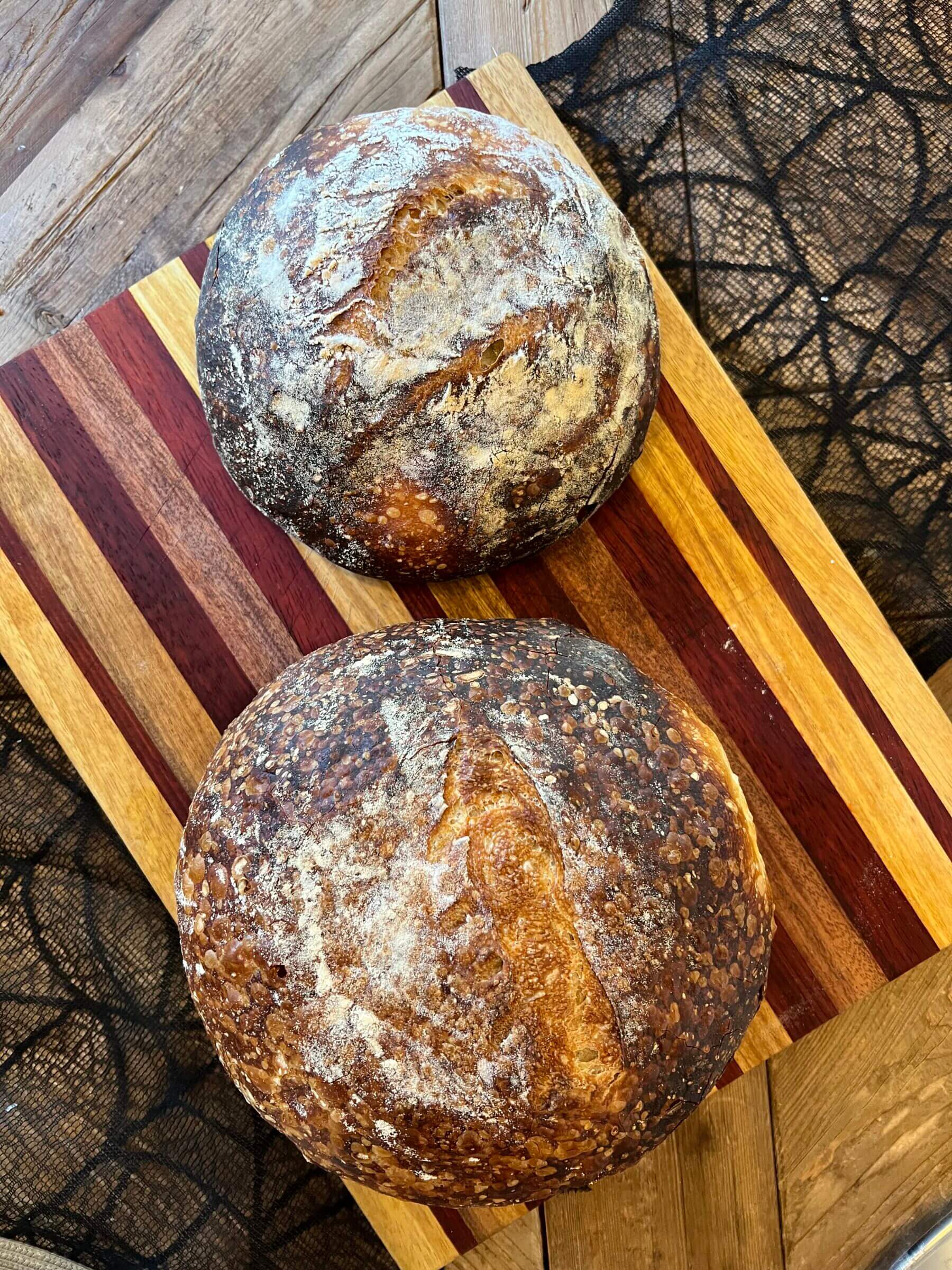
If you absolutely must occasionally consume grains and are otherwise metabolically healthy, I recommend learning how to ferment them. Fermentation breaks down some of their antinutrients (e.g., gluten) while making the few micronutrients they offer more bioavailable. Several months ago, my wife started making sourdough so we could enjoy the occasional homemade bread or pizza.
While fermentation makes grains healthier, it doesn’t necessarily make them healthy.
Frequently Asked Questions
Unrefined grains are whole grains — the terms are synonymous. Refined grains are those which have had their bran and germ removed, which makes them easier to work with. Most commercial grain foods are made with one or more refined ingredient. Typically, that’s refined flour, but many other common grains used in cooked and baked products — such as rolled oats — also fall into the category of “refined.”
With that said, your main takeaway from this article should be that while whole grains may be nominally better than refined grains, the overall health benefits of grains have been grossly overstated. Functionally, there’s no meaningful difference between whole and refined grains — and I’d go so far as to say there are no truly healthy grains. You can’t avert the negative properties of these foods by, for example, opting for whole-grain flour over the more heavily processed version.
Enriched grains are refined grains that have been “enriched” with nutrients during the manufacturing process. As noted earlier in this article, some vitamins and minerals are lost as a result of the removal of the bran and germ. Enriched grain products supposedly compensate for this loss with added substances like folic acid, iron, niacin, riboflavin and thiamin.
Most refined grain products (such as all-purpose flour) are also enriched. However, the fiber lost in the manufacturing process is not added back in. Further, finished products like white bread may be advertised as “enriched,” but that in no way, shape or form makes them healthy.
Sprouted grains are grains that have begun the process of transitioning from a seed to a plant. As discussed above, a grain is a seed that contains all the elements necessary for plant reproduction. However, these seeds also have built-in growth inhibitors that prevent them from trying to grow during sub-optimal conditions. Think about it this way: all life seeks to sustain itself, and plants are no different. But plant species wouldn’t be very durable if their seeds started growing as soon as they were dropped, which might be in the dead of winter or during a monsoon, when the soil is totally soaked. Seeds’ growth inhibitors help them stay dormant until environmental conditions are more favorable.
Some people believe that sprouted grains are easier to digest and offer more health benefits than non-sprouted grains. As a result, there’s a wide array of sprouted grain breads and cereals available in supermarkets. But my view on this follows my view of grains more generally: while I concede that sprouted grains may be healthier than non-sprouted whole grains or refined grains, that fact alone doesn’t render them healthy.
Yes, both soybeans and quinoa are grains.
Tofu is made from soybeans, which are from the legumes class of grains. While tofu is a source of protein and often a staple of a vegan, vegetarian or plant-based diet, I recommend avoiding it for all the reasons described in this article. Particularly of note is the fact that it contains isoflavones, which can mimic estrogen and negatively affect women’s health and hormones.
My favorite books on the subject are Wheat Belly by Dr. William Davis and Grain Brain by Dr. David Perlmutter.
If you’re interested in grain-free cooking, check out Danielle Walker’s Against All Grain cookbook, which got us started on the paleo diet!
You can find them on Amazon or at your favorite book store.
Rice and oatmeal have fewer inflammatory proteins — 2% vs. >10% — than wheat. That makes them less bad. However, that doesn’t mean they’re good for you.
From a nutritional standpoint, they are essentially the same. Both have inherent downsides because they are grains: they contain plant proteins with incomplete amino acid profiles, are high in carbs, and don’t offer any nutrients you can’t get from healthier sources.
Yes, rice contains arsenic. In fact, most foods do — it’s a naturally-occurring element that’s all around us. It’s even in the air we breathe.
Arsenic is absorbed by plants — usually in very low amounts. However, rice has been shown to absorb relatively high amounts of it.
While arsenic is toxic and has been linked to a number of negative health outcomes, we usually consume so little of it that it’s not a problem.
Still, people who consume very high amounts of rice over long periods of time (such as those on certain Asian diets), have been shown to have higher levels of arsenic in their bodies than people who consume it less frequently.
The short answer is “maybe.” Unfortunately, fermentation doesn’t remove gliadin or amylopectin (at least not in meaningful amounts). However, some of the antinutrients in grains are degraded during fermentation.
Not all grains contain gluten, so these two diets aren’t necessarily the same. For example, amaranth, buckwheat, oats, rice, sorghum and teff are a few gluten-free whole grains. These are sometimes utilized for gluten-free flour, which allows people on gluten-free diets to consume actual grain bread while avoiding wheat gluten.
Probably not, unless the product in question is naturally gluten-free. In other words, a gluten-free cookie is probably just as bad as a real cookie. Why? Because most manufacturers replace wheat with other unhealthy grains to make products gluten-free.
Bulgur wheat is a cereal grain that, when cooked, is similar in texture to couscous and quinoa. It’s less refined than standard wheat, but still contains all of the negative characteristics of grains described in this post.
Buckwheat groats are the hulled seeds from buckwheat plants, and are sometimes consumed as a breakfast cereal that has a similar consistency to steel-cut oatmeal. Interestingly, buckwheat flour is made from the seed hulls; that means that contrary to most people’s assumption, buckwheat is a refined grain rather than a whole grain.
A 2010 study found that rye products may contribute to a reduced risk of breast cancer. However, this is thought to be the result of fiber, vitamin, mineral, and phytic acid delivery from rye — all of which are elements that can be obtained through other food sources. As such, you should view this study as one that places rye ahead of other grains as opposed to a suggestion to consume more rye in general.
While doing research for this article, I found a document that was published by the NWIC and hosted on the USDA webpage as, what looks like, a response to the book “Wheat Belly.”
In that document the NWIC tries to discredit many of the statements Dr. Davis made in his book and that I’m making in this article.
Interestingly enough, I couldn’t find any of the text the NWIC quoted in Wheat Belly. Plus, I linked to the studies the NWIC claimed don’t exist throughout this article.
Ultimately, the NWIC document reminds me of the time when the tobacco industry claimed that smoking doesn’t negatively impact your health.
You Too Can Live Without Grains
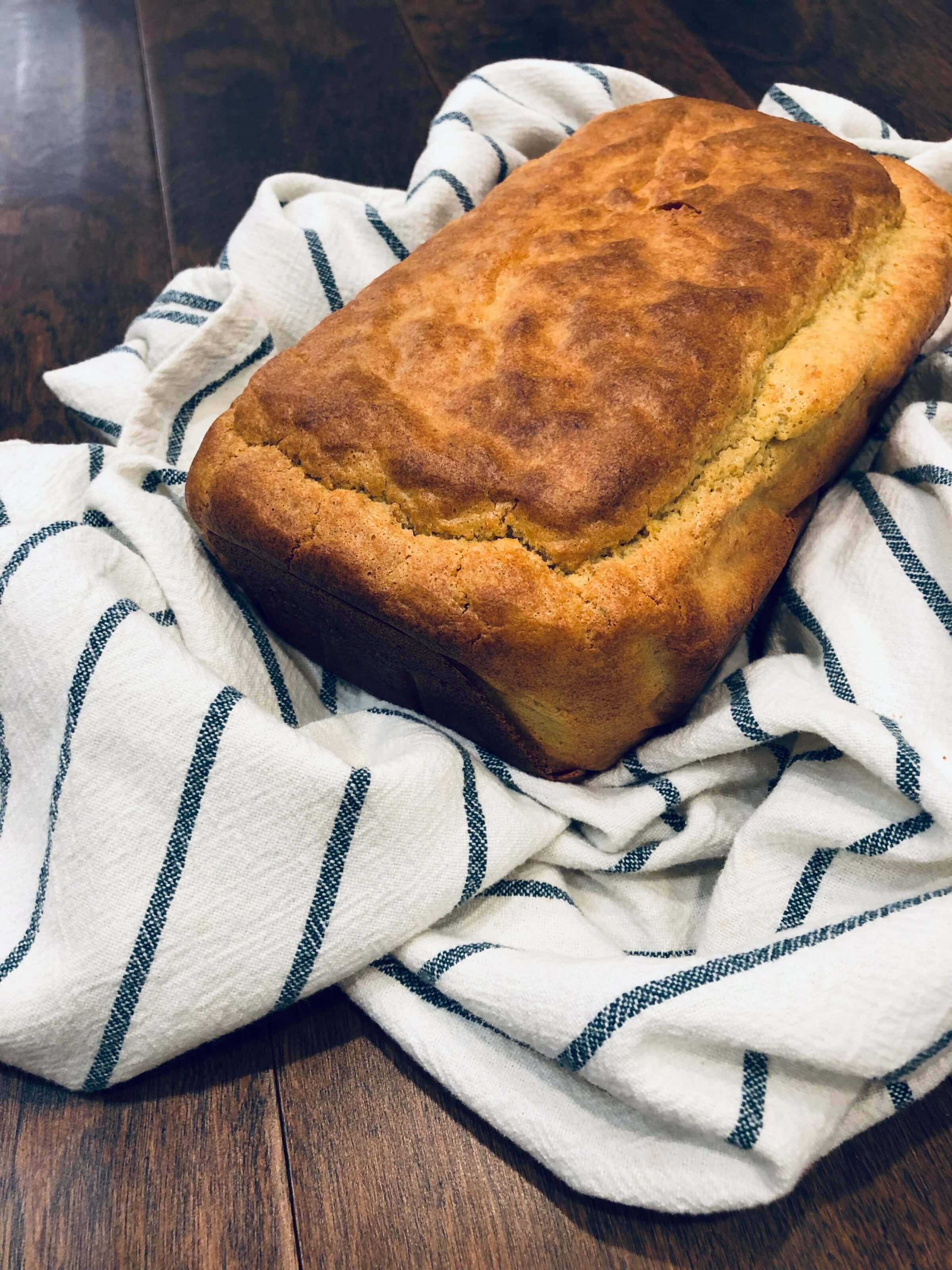
So, just how healthy are grains? I hope this article has shown you that the clear answer to that question is “not very healthy.” The idea that we need to eat them is one of the most pervasive and dangerous dietary myths.
Humans have evolved over millions of years without consuming any significant amounts of grains. Hence, it’s safe to assume that we don’t need grains as a source of energy, vitamins or minerals.
I understand that grains, much like pasteurized dairy, are a convenient source of nutrients for many. However, just because something is convenient doesn’t make it healthy — even if the government tells you so (and even if the U.S. farming industry depends on it).
Grains have nothing that you need to thrive. Your body can absorb animal protein better than plant-based protein, and the same is true for most micronutrients (such as iron).
On the flip side, grains contain proteins and carbohydrates that scientists have linked to diseases such as autoimmune disorders, obesity, diabetes, heart disease and malabsorption.
My recommendation is to mimic the eating habits of our Paleolithic ancestors: follow a diet consisting of animal protein and fat, above-the-ground non-starchy vegetables, and seasonal fruits.
At the same time, stay away from “modern” foods that our bodies haven’t adapted to, such as grains, legumes and other processed foods.
Grain-free diets can help you lose weight, lower your blood sugar, lower your blood cholesterol, increase insulin sensitivity, promote digestion and absorption of food, and decrease the risk of many chronic illnesses.

Michael Kummer is a healthy living enthusiast and CrossFit athlete whose goal is to help people achieve optimal health by bridging the gap between ancestral living and the demands of modern society.
Medical Disclaimer
The information shared on this blog is for educational purposes only, is not a substitute for the advice of medical doctors or registered dieticians (which we are not) and should not be used to prevent, diagnose, or treat any condition. Consult with a physician before starting a fitness regimen, adding supplements to your diet, or making other changes that may affect your medications, treatment plan or overall health. MichaelKummer.com and its owner MK Media Group, LLC are not liable for how you use and implement the information shared here, which is based on the opinions of the authors formed after engaging in personal use and research. We recommend products, services, or programs and are sometimes compensated for doing so as affiliates. Please read our Terms and Conditions for further information, including our privacy policy.
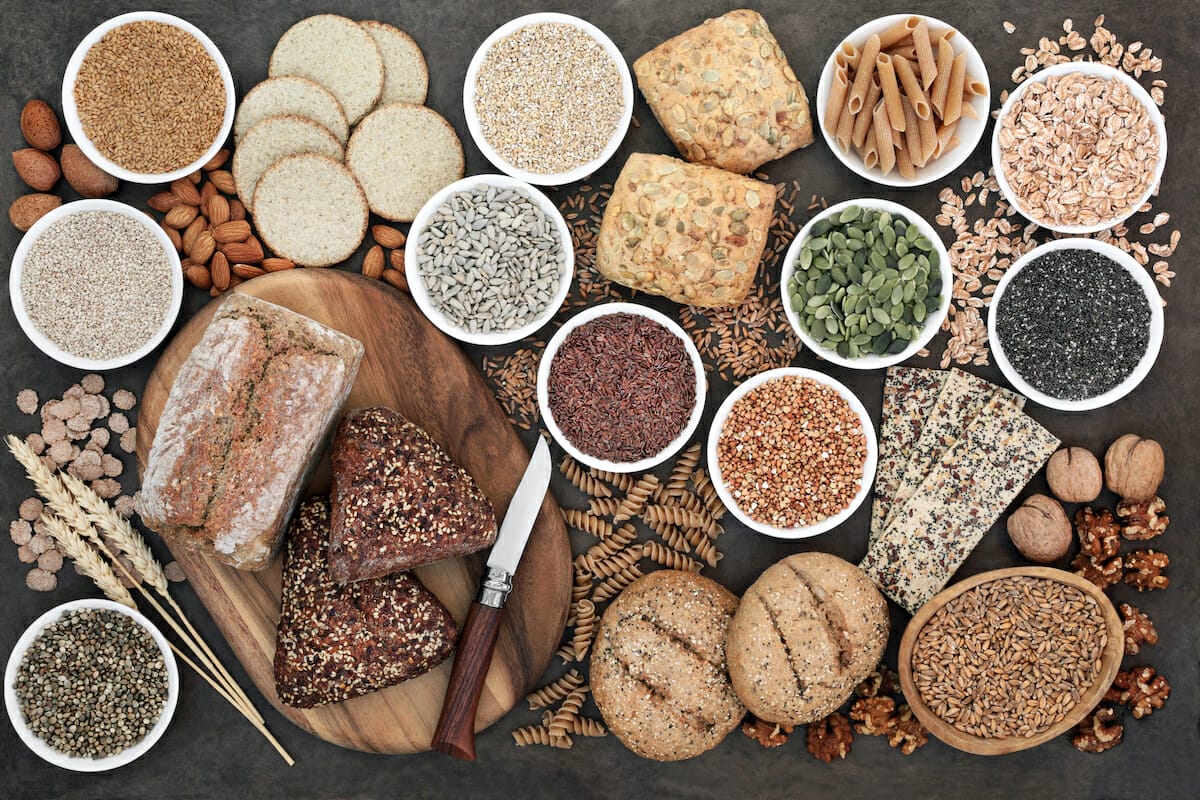

Very useful! Thanks for bringing these subjects to light.
You’re most welcome!
The difference between you and the rest of the world is plain to see. You take the time and trouble to undertake intense study to support your beliefs. Then you are not afraid to publish your findings for the benefit of others.
If only the food industries could adopt this approach, the medical institutions would be almost out of work in short order, drug companies would reduce in size and power, and conspiracy theories would be disproved. We could start getting on with our lives!
Thanks, Elsdon! I really appreciate the feedback!
I had gut pain and diarrhea intermittently my whole childhood. I have never taken a pharmaceutical product or been to the doctors so was in OK health but not exactly thriving. In my 20’s it became worse and it started to affect my thyroid/adrenals and I had chronic anxiety. I tested with a severe zinc deficiency.
Cut grains out entirely and never had another symptom again.
Just eat steak instead and your whole life will correct. :D
That’s excellent advice :)
How do I find meat that I know is safe? Are growth hormones goven to grass-fed livestock?
Hi Gary,
100% grass-fed/finished meat doesn’t have any growth hormones. Usually, the label of those products confirms that.
PS: Apologies for the late reply. Your comment got accidentally deleted by my anti-spam plugin and I just found out about it.
Hi, I eat very little meat, probably about once a week. Is it possible to adopt a paleo diet eating very little meat? Really interesting article, thank you!
Hey Tara,
you can certainly exclusively consume paleo-friendly foods but it wouldn’t be a paleo diet considering that our ancestors and early humans were apex predators who got most of their calories from animal sources.
May I ask why you’re not eating more meat?
Cheers,
Michael
People in mediteranian and in oginawa are relatively healthy and live long but they eat some grains. Can these evidences not enough to show that grains are not that bad.
I’ve covered the Blue Zone myth in this article: https://michaelkummer.com/plants-vs-meat/
That doesn’t mean you can never have grains. I eat grains on occasion but I don’t make them part of my regular diet for all of the reasons I outlined in my article.
Hi Michael,
Excellent article! People often ask me about eating grains, especially oatmeal. Knowing that all grains are unhealthy, I alway say no and have mentioned some reasons that were in your article.
But this was very thorough and much more convincing than what I knew. I cant thank you enough and will be sending this article to anyone that asks.
Carrie
Thanks, I appreciate your feedback, Carrie!
PS: Apologies for the late reply. Your comment got accidentally deleted by my anti-spam plugin and I just found out about it.
Why do you criticize a study for having a small sample size of 46 but then cite studies that also have a similarly-sized sample size of 70? Your entire claims of weight-loss benefits are based on a study which had a sample size of 70. Not only this, but they were all post-menopausal women, which isn’t exactly a good representation of the average population.
The part of the article that says protein doesn’t induce an insulin response is not correct. Protein produces a response about half that of carbs, but still about double that of fat. That is why ketogenic diets are high in fat and only moderate in carbs. Too much protein can prevent ketosis.
Hi Mike,
Gluconeogenesis is a demand and not a supply-driven process. It’s a myth that too much protein kicks you out of ketosis. You can learn more about the science behind that in my Keto guide: https://michaelkummer.com/keto-paleo/
Cheers,
Michael
Divide 358.1 million metric tons of grains by the population of the USA, 327 mio in 2017, get more than a ton per capita and year from baby to Methuselah, that’s 3 kg/day per head.
This can’t be, unless the figure includes animal feed cereals, consumed as meat, and including the barley used for beer ?
Hi Eric,
good catch! I should have said “grain use” instead of “grain consumption.” The former includes all use, which is why the number is so high. The alternative is to show “wheat consumption,” which is tracked separately.
Thanks, Michael. I really appreciate the time and energy you put into your research.